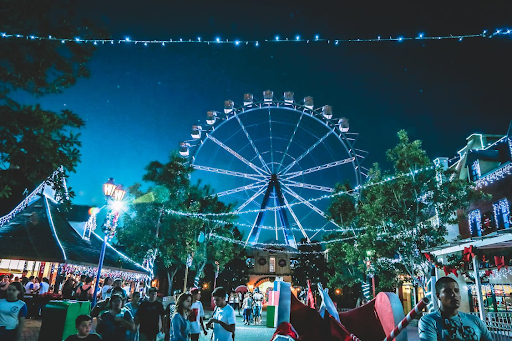Carnivals are a delightful celebration of culture, joy, and vibrant colors. One of the most exciting aspects of any carnival is the elaborate costumes and jackets that people wear. In this article, we will delve into the world of carnival jackets and costumes, exploring their history, styles, and significance in various cultures. So, get ready to embark on a journey through the kaleidoscope of carnival fashion!
The origins of Carnival costumes
Carnivals have a rich history that dates back centuries. They originated as a pre-Lenten celebration, where people would indulge in festivities before the period of fasting and abstinence. During these celebrations, people would wear masks and costumes as a way to escape their daily lives and embrace a more playful and extravagant persona.
The evolution of Carnival fashion
Over the years, carnival costumes have evolved from simple masks and cloaks to elaborate and ornate ensembles. Different cultures have put their unique spin on carnival attire, resulting in a dazzling array of styles and designs.
Types of Carnival jackets
Carnival jackets (Dutch: carnavalsjas) are a crucial part of any carnival costume. They add an element of grandeur and style to the overall look. Let’s explore some of the most popular types of carnival jackets:
1. Sequined Delight
Sequined jackets are a staple in many carnival celebrations. These jackets are adorned with shimmering sequins that catch the light and create a dazzling effect. They are perfect for adding a touch of glamour to your carnival outfit.
2. Feathered Elegance
Feathered jackets are a true showstopper. These jackets are adorned with colorful feathers that create a dramatic and eye-catching look. They are often seen in carnivals with a tropical or exotic theme.
3. Masquerade Magic
Masquerade jackets are characterized by their intricate masks and elaborate embroidery. These jackets are a nod to the historical origins of carnivals and add an air of mystery and sophistication to your costume.
4. Glittering Glam
If you want to shine like a star at the carnival, opt for a glittering jacket. These jackets are covered in sparkling embellishments and are sure to make you the center of attention.
The Significance of Carnival Costumes
Carnival costumes hold deep cultural and social significance in many regions around the world. You can’t run in this festival with a farmer costume (Dutch: boeren kostuum), for example. They often represent the traditions, folklore, and history of a particular community. Additionally, wearing carnival costumes allows people to express themselves creatively and embrace their cultural heritage.
Creating Your Own Carnival Costume
Now that we’ve explored the different types of carnival jackets and their significance, you might be inspired to create your own carnival costume. Here are some tips to get you started:
1. Choose a Theme
Select a theme that resonates with you. Whether it’s a historical era, a famous character, or a cultural tradition, your theme will set the tone for your costume.
2. Gather Materials
Collect the materials you’ll need for your costume, including fabric, embellishments, and accessories. Don’t forget to consider comfort and mobility while creating your outfit.
3. Get Creative
Let your imagination run wild as you design your costume. Experiment with colors, textures, and shapes to create a unique and eye-catching look.
4. Attention to Detail
Pay attention to the smallest details, such as jewelry, makeup, and footwear, to complete your carnival ensemble.
Conclusion
Carnival jackets and costumes are a testament to the vibrant and diverse world of carnival celebrations. They not only add to the festive atmosphere but also allow individuals to express themselves creatively and connect with their cultural roots. So, the next time you attend a carnival, be sure to don your favorite carnival jacket and immerse yourself in the joyous spirit of the festivities!





